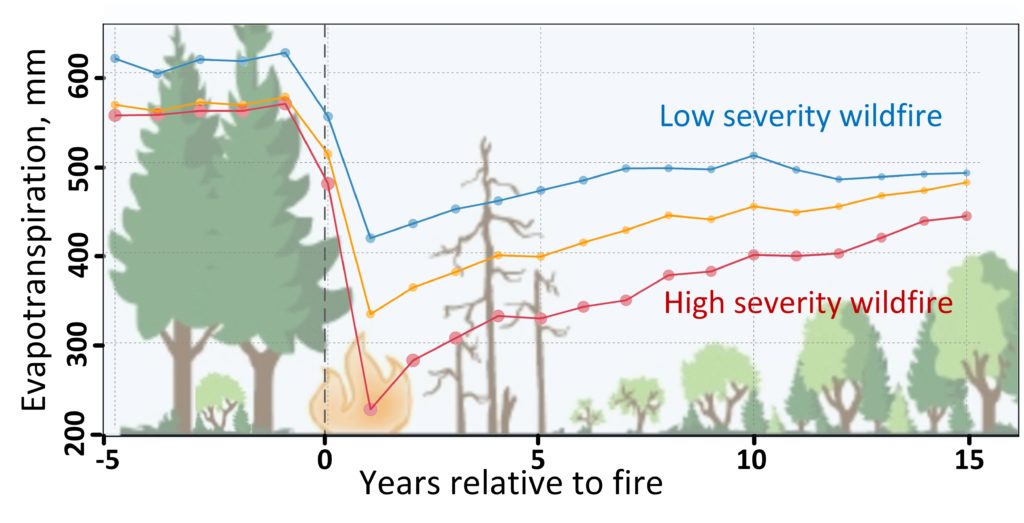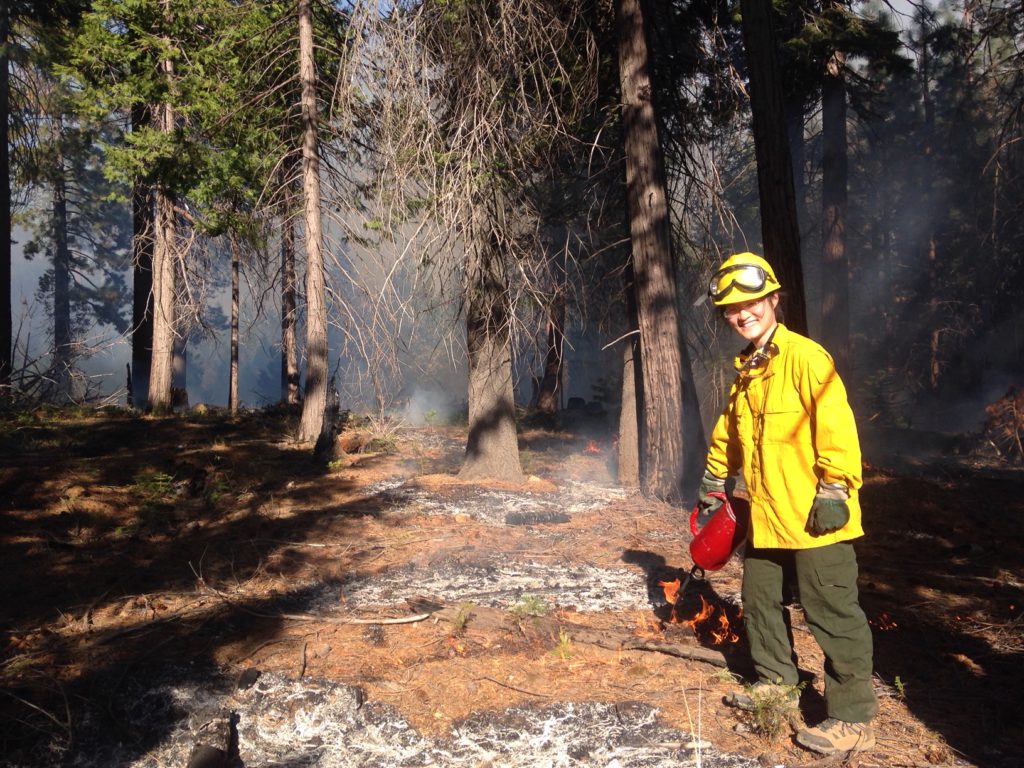By Jaquelyn Lugg, UC Merced
While forest restoration is often associated with mitigating wildfire risk and improving ecosystem health throughout the Sierra Nevada, these actions will also have a dramatic impact on water use within forests and the amount of runoff that ultimately flows downstream.
Since the Sierra Nevada provides over 60% of California’s water supply and sustains a globally important agricultural region, quantifying water-related benefits can be critical in showing the true value and cost-benefit of forest management. But until now, there hasn’t been enough locally relevant data to incentivize restoration projects.
New research out of the Sierra Nevada Research Institute (SNRI) at UC Merced fills this data gap and provides a method to monetize the water-related benefits of forest thinning.
The research team, led by former SNRI postdoctoral researcher Qin Ma, used satellite imagery of Sierra Nevada and Southern Cascade Range forests from 1985 to 2017 to track changes in evapotranspiration—mainly water use by vegetation—before and after large fires. The study area covered nearly 53,000 square miles and included fourteen major source-water basins.
Recently published in the Journal of Hydrology, the team’s findings indicate that on average, evapotranspiration dropped 36% (265 mm) in the first year after a fire, with continued reductions averaging 23% a year in the first 15 years post-fire. These changes varied in different areas depending on burn severity and forest density before fire.

“This historical data about water yield from Sierra forests after fire are important because it acts as a guide,” explained Ma, now an assistant professor in the Mississippi State University Department of Forestry. “Understanding how water use in forests has changed after disturbances in the past can help us predict how forests, and the water supply they provide, will respond to comparable management actions like thinning or the reintroduction of low-intensity fire in the future.”
While high-severity fires led to the greatest reductions in evapotranspiration, these events also often have detrimental impacts on human communities, wildlife habitat, carbon storage, and water quality due to erosion. The challenge, the researchers note, is then to mitigate these negative effects with the benefits of increased runoff.
Using an analysis based on the historical data, the team found that a future moderate-severity burn, or an equivalent management action like thinning, over just 27% of the Sierra Nevada would result in a 9% reduction in evapotranspiration.
“Our data not only show that ecological restoration can simultaneously reduce drought stress in Sierra Nevada forests and increase water yield but also demonstrates a way to quantify the benefits of forest management actions,” said Martha Conklin, Professor at UC Merced’s School of Engineering and co-author on the study. “Because restoration projects are so often limited by cost, it’s critical that we monetize the water-related benefits to help incentivize forest management.”

The research team on this study also included SNRI’s Roger Bales and Joseph Rungee, Brandon Collins of UC Berkeley, and Michael Goulden of UC Irvine. The research was supported by the National Science Foundation, the UC Water Security and Sustainability Research Initiative, the USDA National Institute of Food and Agriculture, and the California Strategic Growth Council through the Innovation Center for Ecosystem Climate Solutions.
The full study, titled “Wildfire Controls on Evapotranspiration in California’s Sierra Nevada,” is available in the Journal of Hydrology online here: https://www.sciencedirect.com/science/article/abs/pii/S0022169420308246?dgcid=author

